Joseph H. Silverman | |
|---|---|
| Born | March 27, 1955 |
| Nationality | American |
| Alma mater | Harvard University |
| Awards | Leroy P. Steele Prize (1998) |
| Scientific career | |
| Fields | Mathematics |
| Institutions | Brown University |
| Doctoral advisor | John Tate |
| Doctoral students | Michelle Manes Katherine E. Stange |
Joseph Hillel Silverman (born March 27, 1955, New York City) [1] is a professor of mathematics at Brown University [2] working in arithmetic geometry, arithmetic dynamics, and cryptography.
Joseph Silverman received an Sc.B. from Brown University in 1977 and a Ph.D. from Harvard University in 1982 under the direction of John Tate. He taught at M.I.T. (1982–1986) and at Boston University (1986–1988) before taking a position at Brown in 1988. [3]
Silverman has published more than 100 research articles, written or coauthored six books, and edited three conference proceedings; his work has been cited more than 5000 times, by over 2000 distinct authors. [4] He has served on the editorial boards of Algebra and Number Theory and New York Journal of Mathematics. [5] [6]
In 1996, Silverman, along with Jeffrey Hoffstein, Jill Pipher and Daniel Lieman, founded NTRU Cryptosystems, Inc. to market their cryptographic algorithms, NTRUEncrypt and NTRUSign.
In 2012 he became a fellow of the American Mathematical Society. [7]
Silverman has written two graduate texts on elliptic curves, The Arithmetic of Elliptic Curves (1986) and Advanced Topics in the Arithmetic of Elliptic Curves (1994). For these two books he received a Steele Prize for Mathematical Exposition from the American Mathematical Society, which cited them by saying that “Silverman's volumes have become standard references on one of the most exciting areas of algebraic geometry and number theory.” Silverman has also written three undergraduate texts: Rational Points on Elliptic Curves (1992, co-authored with John Tate), A Friendly Introduction to Number Theory (3rd ed. 2005), and An Introduction to Mathematical Cryptography (2008, co-authored with Jeffrey Hoffstein and Jill Pipher). Additional graduate-level texts authored by Silverman are Diophantine Geometry: An Introduction (2000, co-authored with Marc Hindry) and The Arithmetic of Dynamical Systems (2007).

Faltings's theorem is a result in arithmetic geometry, according to which a curve of genus greater than 1 over the field of rational numbers has only finitely many rational points. This was conjectured in 1922 by Louis Mordell, and known as the Mordell conjecture until its 1983 proof by Gerd Faltings. The conjecture was later generalized by replacing by any number field.

Jean-Pierre Serre is a French mathematician who has made contributions to algebraic topology, algebraic geometry and algebraic number theory. He was awarded the Fields Medal in 1954, the Wolf Prize in 2000 and the inaugural Abel Prize in 2003.

Oscar Zariski was an American mathematician. The Russian-born scientist was one of the most influential algebraic geometers of the 20th century.
In mathematics, Diophantine geometry is the study of Diophantine equations by means of powerful methods in algebraic geometry. By the 20th century it became clear for some mathematicians that methods of algebraic geometry are ideal tools to study these equations. Diophantine geometry is part of the broader field of arithmetic geometry.

Serge Lang was a French-American mathematician and activist who taught at Yale University for most of his career. He is known for his work in number theory and for his mathematics textbooks, including the influential Algebra. He received the Frank Nelson Cole Prize in 1960 and was a member of the Bourbaki group.
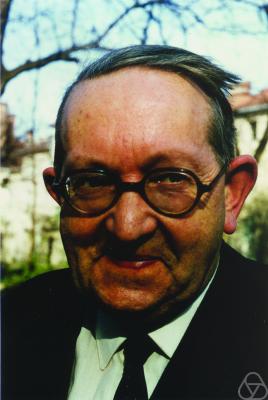
Harold Davenport FRS was an English mathematician, known for his extensive work in number theory.

Jean Alexandre Eugène Dieudonné was a French mathematician, notable for research in abstract algebra, algebraic geometry, and functional analysis, for close involvement with the Nicolas Bourbaki pseudonymous group and the Éléments de géométrie algébrique project of Alexander Grothendieck, and as a historian of mathematics, particularly in the fields of functional analysis and algebraic topology. His work on the classical groups, and on formal groups, introducing what now are called Dieudonné modules, had a major effect on those fields.
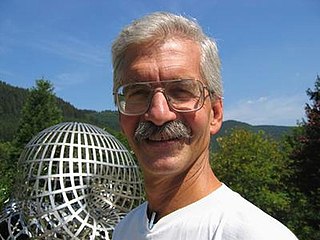
Nicholas Michael Katz is an American mathematician, working in arithmetic geometry, particularly on p-adic methods, monodromy and moduli problems, and number theory. He is currently a professor of Mathematics at Princeton University and an editor of the journal Annals of Mathematics.

Yuri Ivanovich Manin was a Russian mathematician, known for work in algebraic geometry and diophantine geometry, and many expository works ranging from mathematical logic to theoretical physics.

John William Scott "Ian" Cassels, FRS was a British mathematician.
This is a glossary of arithmetic and diophantine geometry in mathematics, areas growing out of the traditional study of Diophantine equations to encompass large parts of number theory and algebraic geometry. Much of the theory is in the form of proposed conjectures, which can be related at various levels of generality.
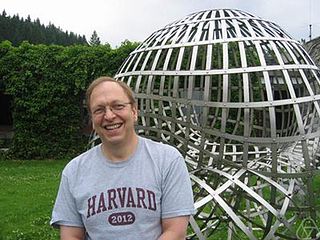
Joseph Daniel Harris is a mathematician at Harvard University working in the field of algebraic geometry. After earning an AB from Harvard College, where he took Math 55, he continued at Harvard to study for a PhD under Phillip Griffiths.

David Eisenbud is an American mathematician. He is a professor of mathematics at the University of California, Berkeley and former director of the then Mathematical Sciences Research Institute (MSRI), now known as Simons Laufer Mathematical Sciences Institute (SLMath). He served as Director of MSRI from 1997 to 2007, and then again from 2013 to 2022.

Phillip Augustus Griffiths IV is an American mathematician, known for his work in the field of geometry, and in particular for the complex manifold approach to algebraic geometry. He is a major developer in particular of the theory of variation of Hodge structure in Hodge theory and moduli theory, which forms part of transcendental algebraic geometry and which also touches upon major and distant areas of differential geometry. He also worked on partial differential equations, coauthored with Shiing-Shen Chern, Robert Bryant and Robert Gardner on Exterior Differential Systems.

Robin Cope Hartshorne is an American mathematician who is known for his work in algebraic geometry.
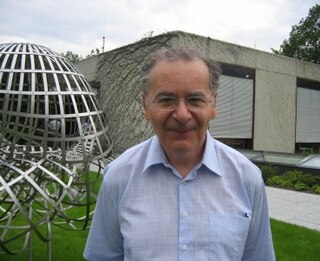
Henri Cohen is a number theorist, and an emeritus professor at the University of Bordeaux. He is best known for leading the team that created the PARI/GP computer algebra system. He also introduced the Rankin–Cohen bracket, co-proposed the Cohen-Lenstra heuristics and has written several textbooks in computational and algebraic number theory.
In number theory, the Néron–Tate height is a quadratic form on the Mordell–Weil group of rational points of an abelian variety defined over a global field. It is named after André Néron and John Tate.
János Kollár is a Hungarian mathematician, specializing in algebraic geometry.
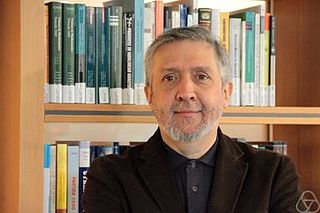
Umberto Zannier is an Italian mathematician, specializing in number theory and Diophantine geometry.
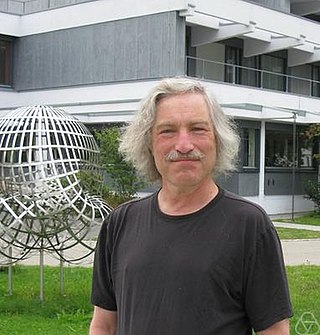
Jeffrey Ezra Hoffstein is an American mathematician, specializing in number theory, automorphic forms, and cryptography.